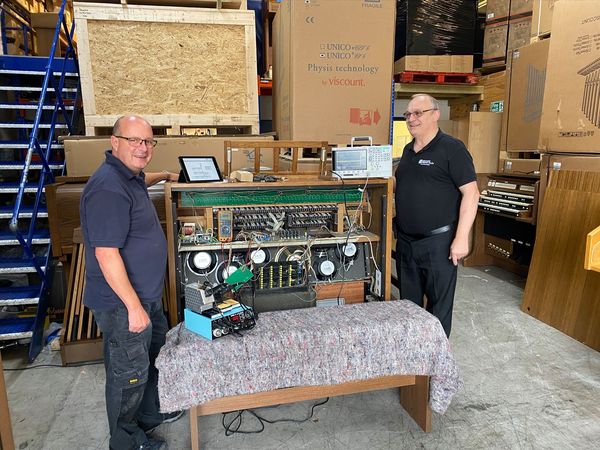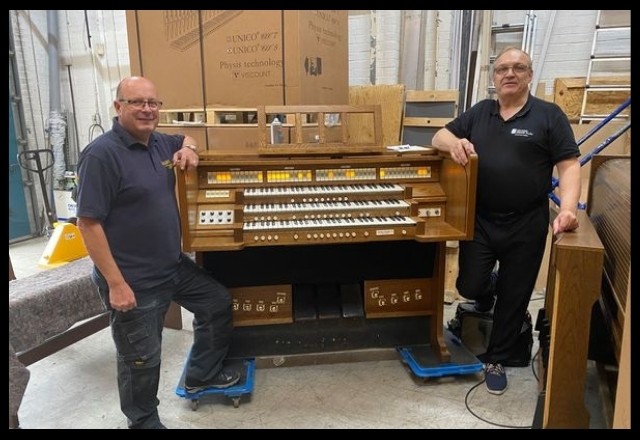We recently supplied and installed a new digital organ in St Mary & St John the Divine Balham. We replaced a 3 manual Makin pictured above installed in the early 1990’s.
This instrument had done well over 25 years’ service but had been deemed beyond economic repair by a visiting engineer. About 4 stops would stop working after a few minutes and it was said that from time to time the organ would cut out completely and have to be switched off/on to coax it back into life.
There was also a very low level hum audible in the console speakers that disappeared as soon as any note was played. Most listeners would not have noticed it but it was very annoying if you were the player.
When an instrument has multiple faults there is no doubt it is harder to diagnose, especially if they are intermittent faults. When there are multiple channels and external speakers the fault could be with sound generation or amplifiers adding to the options to be considered.
Taking the old digital organ in part exchange
We took the old instrument in part exchange. Back at the workshop we had time to explore what was potentially wrong with it.
In the workshop under less time pressure we could systematically work through potential causes and test if the repairs carried out would solve the issue. We also had the benefit of good lighting and magnification to inspect in detail the quality of the circuit boards.
With this type of problem, it is very tempting to presume a ‘chip’ has failed and the sound generation has ceased altogether.
Replacement chips can be harder to find but many are generic processors still freely available so a ‘chip issue’ in itself may not be a valid reason to give up hope. With this instrument, we could move a chip known to be working for a different part of the organ into the problem slot. The fault remained so we had proved it was not a chip issue.

More detailed examination of the associated circuit boards revealed an intermittent ‘dry joint’. Some selective re-soldering resolved the sometime missing voices, but the annoying low level hum remained. As it completely disappeared when a note was played we were confident it was resolvable but puzzled as to where the noise was being generated.
Repairing the old digital organ for use as home practice instrument
Further analysis revealed the noise went away when the reverb module was disconnected. This was a major breakthrough and revealed that the reverb unit had been set to deliver its absolute maximum effect and was thus being overdriven.
Adjustment to the ‘inaccessible’ reverb settings hidden inside the instrument resolved this other issue. During all this time we never experienced a total cut out of sound requiring the organ to be switched off/on so that may well have been an issue in the external speaker system we were no longer using.
So after a couple of days work the instrument was back in full working order and is now happily in use with a new home practice customer.
The point of sharing this story with you is to help dispel the myth that I see so often bandied about that a pipe organ is for life while a ‘toaster’, as our instruments are so often referred to, is for 15/20 years and when if it fails it can no longer be repaired.
Sound quality has come on a long way since the early 1990’s. Our Balham Church customer now have an immeasurably better sound and an instrument (Regent 356) that will be maintenance free due to its warranty for the next 10 years.
While a very usable old digital organ has found a new role as a home practice solution for a young organist in training.
I have had a passion for church organs since the tender age of 12. I own and run Viscount Organs with a close attention to the detail that musicians appreciate; and a clear understanding of the benefits of digital technology and keeping to the traditional and emotional elements of organ playing.




I am a Viscount Cadet 31s owner of 9 years and very happy with it. It gets lots of use and has recently developed an annoying click when Gt B (next to middle C) is released. Any suggestions as to a simple fix? If not please may I arrange an engineer visit?
Hi Ian, One of the ‘tracker touch’ bubbles has worn out. You will need an engineer visit. Regards David